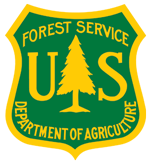-
 Hudsonia
Hudsonia
-
Since 1981 Hudsonia has conducted environmental research, education, training and technical assistance to protect the natural heritage of the Hudson Valley and neighboring regions. A non-advocacy organization, Hudsonia serves as a neutral voice in the challenging process of land use decision making.
Our work includes education, basic and applied research on rare species and their habitats, wetlands and estuaries, and the study of invasive plants and other threats to biodiversity.
Located in
LP Members
/
Organizations Search
-
 Mariposa County Resource Conservation District
Mariposa County Resource Conservation District
-
The mission of the Mariposa County Resource Conservation District is to encourage and facilitate cooperative solutions to local resources conservation issues and problems. We provide technical, financial and educational resources, whatever their source, to meet the needs of the local land-users.
Located in
LP Members
/
Organizations Search
-
 United States Army
United States Army
-
Our Purpose Remains Constant: To deploy, fight and win our nation’s wars by providing ready, prompt and sustained land dominance by Army forces across the full spectrum of conflict as part of the joint force. The Army mission is vital to the Nation because we are the service capable of defeating enemy ground forces and indefinitely seizing and controlling those things an adversary prizes most – its land, its resources and its population.
Located in
LP Members
/
Organizations Search
-
 Cerulean Warbler Forest Management Project
Cerulean Warbler Forest Management Project
-
The Cerulean Warbler project was initiated to allow the scientific and management communities to test forestry methods and use experimental harvesting of timber to enhance Cerulean Warbler habitat.
Located in
Projects
-
 Chiapas/Appalachian/Pacific Alliance
Chiapas/Appalachian/Pacific Alliance
-
Many of the bird species that breed in the AMJV spend the fall and winter months in Mexico and Central and South America. Our partnership is committed to work with international partners to design and implement efficient and effective conservation projects for priority species on their migratory pathways and wintering areas.
Located in
Projects
-
 Forestlands Best Management Practices for Golden-winged Warblers
Forestlands Best Management Practices for Golden-winged Warblers
-
Combing through habitat literature and conducting two years of surveys for the presence of Golden-winged Warblers at forest stands, the AMJV and partners developed best management practices for providing breeding habitat for Golden-winged Warblers through timber harvesting.
Located in
Projects
-
Species and Habitat Vulnerability Assessments of Appalachian Species and Habitats
-
Future climate change adaptation and mitigation strategies will be dependent on the best available projections of how the regional climate will change and on estimates of the impacts those changes will have on the region’s natural and cultural resources. Thus understanding the vulnerability of various species and habitats within the Appalachian LCC to climate change is of critical importance.
Located in
Research
-
 Species and Habitat Vulnerability Assessments of Appalachian Species and Habitats
Species and Habitat Vulnerability Assessments of Appalachian Species and Habitats
-
Future climate change adaptation and mitigation strategies will be dependent on the best available projections of how the regional climate will change and the impacts those changes will have on the region’s natural and cultural resources. Understanding the vulnerability of various species and habitats to climate change within the Appalachian LCC is of critical importance for making effective conservation decisions. The AppLCC funded a Climate Change Vulnerability Assessment research project that addresses several factors: 1) how the Cooperative should acquire information about the climate vulnerability of Appalachian species and habitats to develop vulnerability assessments for a suite of key species and habitats to share with partners; 2) compilation of known vulnerability assessments of species and habitats, and 3) new climate change vulnerability assessments of selected species and habitats in the AppLCC region.
Located in
Research
-
 Assessing Future Energy Development Across the Appalachians
Assessing Future Energy Development Across the Appalachians
-
Assessing Future Energy Development across the Appalachian LCC used models that combined data on energy development trends and identified where these may intersect with important natural resource and ecosystem services to give a more comprehensive picture of what potential energy development could look like in the Appalachians. Ultimately this information is intended to support dialogue and conservation on how to effectively avoid, minimize, and offset impacts from energy development to important natural areas and the valuable services they provide.
Located in
Research
-
 Impact of Urbanization on Priority Bird Populations
Impact of Urbanization on Priority Bird Populations
-
25 bird species models were developed to determine the sensitivity of priority bird species populations to urbanization.
Located in
Research























